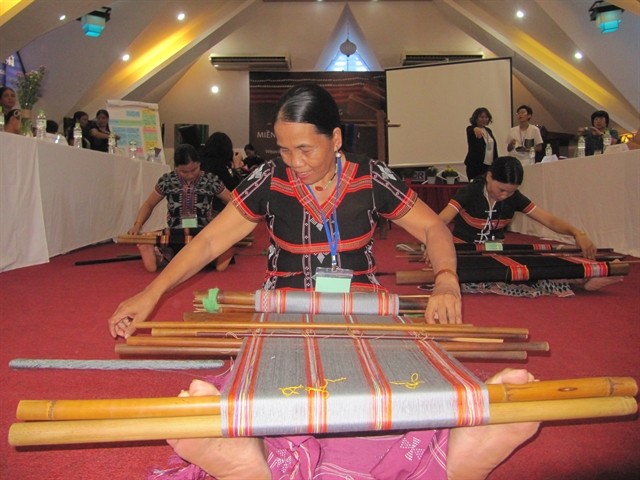 Inner Sanctum
Inner Sanctum

The COVID-19 pandemic has shown how important grassroots health units are to the whole system. However, the grassroots health systems in many provinces and cities in Việt Nam are underdeveloped due to a lack of investment.

|
| Dr Nguyễn Thu Anh, country director of the Woolcock Institute of Medical Research, University of Sydney. |
The COVID-19 pandemic has shown how important grassroots health units are to the whole system. However, the grassroots health systems in many provinces and cities in Việt Nam are underdeveloped due to a lack of investment.
Dr Nguyễn Thu Anh, country director of the Woolcock Institute of Medical Research, University of Sydney, talks to Thu Vân about her expectations of an ideal grassroots healthcare system.
What are your observations of the current situation of Việt Nam’s grassroots healthcare system, especially with regards to the pandemic?
In the fourth wave of the pandemic in Việt Nam, especially in HCM City, we witnessed an unprecedented overload of the health system.
Primary health care, or grassroots health care, is the closest medical line to the people, so the first pressures of the pandemic are put on the shoulders of these medical staff, especially early detection and care for F0 patients.
In areas with a high number of F0 cases, with a limited number of primary health workers, they are really reaching their limit.
Besides providing care and treatment for F0 who stayed at home, which was already a huge workload, the health stations also have to perform tasks such as contact tracing and vaccination.
The efforts of staff at these grassroots health stations have lasted many months. Especially during the pandemic, many health workers were stressed out due to overwork.
Some of the problems at grassroots health stations include too few staff, low salaries and a lack of opportunities to update knowledge and improve skills. These problems have resulted in many grassroots medical staff having to quit.
What do you think the health sector can do to support its workers at the grassroots?
Let me tell you my expectations about a good working environment for primary health care workers or an ideal communal health station.
They would receive a monthly salary in full and on time. It might not be much but as they stay longer in the job, they can make extra income from services like remote care, home care and consulting classes held by the health unit.
They are respected by their colleagues and patients. Each person has their own tasks but leaders will create favourable conditions for them to support, innovate and improve healthcare services.
They are working in a learning organisation and never stop learning. The health units would organise in-house sharing and instruction sessions where their staff can master and improve their professional skills. Training from veteran doctors, cooperation with foreign universities and receiving interns from foreign universities are all conducted.
Health staff at grassroots facilities would only work at stations 10 days a month. For the rest of the time, they would go door-to-door to check residents in their areas. In doing so, they would discover common diseases among residents and suggest home-care service packages for families. Through this, they can also discover complicated cases and suggest further treatment at health facilities at higher levels.
So, basically, to keep health workers at communal or ward health stations we need proper payment, a professional and friendly working environment, opportunities to learn and master their skills, and respect.
So, we need a new approach to grassroots health care according to your “ideal communal health station”?
Previously, grassroots health care was at commune and ward health stations. This is also the medical unit closest to the people as they are located in the residential areas of each locality.
In the 1980s and 1990s, the grassroots health network in Việt Nam was very successful with expanded vaccination programmes, health care for pregnant women and children and clean water sanitation.
At that time, most of the people were poor and ignorant. Facilities in the country were generally very poor. This is also the reason why commune and ward health stations maximised their functions.
However, at present, the majority of people have a better economic foundation and are better informed. In addition, the pattern of disease to include not only infectious diseases but also non-communicable diseases was different from before. This entails changing healthcare needs.
The current network of grassroots health stations no longer meets the needs of the people. Demand for quality medical care is higher.
Currently, when people have health problems the first medical services they seek are pharmacies, private clinics, “Google doctor” or Telehealth, as well as public hospitals or family doctors.
Therefore, at this point, the new set of private and public health facilities should be considered as a grassroots health network in which private health care can completely provide primary healthcare services such as expanded immunisation, under the model of a non-profit enterprise.
Will this increase the burden on health spending for people?
This is true. It will also increase the inequality in accessing health care. But in the context of public spending/investment for health care of the Government being low, and the administration capacity not being able to address such things, a non-profit healthcare enterprise could help reduce costs.
If health insurance is designed to cover these services, people will not have to pay. Also, quality healthcare services, including preventive health care and treatment, will help reduce unnecessary and ineffective spending.
So what can be done to improve the quality and capacity of the grassroots healthcare network?
Going forward, Việt Nam will need to change its perspective on grassroots health, thereby improving the capacity of such units. We need to consider private health care as part of the grassroots network.
Second, the health sector can build an institution that operates the grassroots health network according to the market to create competitiveness, increase service quality and reduce costs.
We should also consider giving up the monopoly on health insurance to ensure the interests of the people, avoid waste and bureaucracy, and reduce costs for grassroots medical services.
Third, Việt Nam needs to make public investment in primary healthcare programmes based on disease patterns, market mechanisms, and effectiveness in protecting people's health, instead of the number of visits paid for by insurance.
Fourth, commune and ward health stations need to include both public services and private services. These two service groups must absolutely not conflict with each other's interests.
To improve the capacity of medical examination and treatment at the commune and ward health stations, the health sector must not limit the tasks assigned and medical examination and treatment capacity of medical stations.
These stations must be allowed to select and treat common diseases that are easy to diagnose and treat, and have modern medical equipment. They should apply technology to medical services to increase quality and reduce errors, such as AI.
But it’s worth noting that building big headquarters and buying costly machines will only be a waste since healthcare staff won’t be able to operate them. These machines are “overqualified” for the demand of screening, discovering and treating popular diseases.
A network of modern laboratories with a system to send samples and return results automatically within the day should be set up to support the health stations. Also, these stations should be able to connect to sponsor hospitals via Telehealth to ask for support for difficult cases as well as be ready to transfer patients when needed.
Leaders of these health stations should have health service management capacity.
Although it will be a very long journey, improving the capacity of the grassroots health system will greatly reduce healthcare costs, increase labour productivity, and avoid disturbances on the frontline, as we saw during the pandemic. VNS